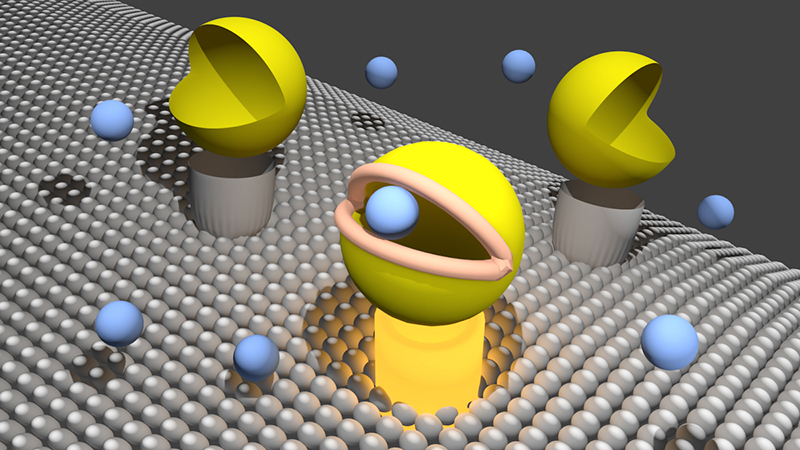Pacman-shaped receptor's "bite" sheds light on learning and memory processes
Japan -- What goes on inside the brain when we learn new things? Much still remains wrapped in mystery, but scientists have found a way to examine this at the molecular level.
Researchers in Japan have engineered an artificial switch that could let scientists turn individual neurotransmitter receptors on and off. Shedding light on these receptors' role in memory formation could contribute to the development of new drugs for neurological diseases, including Alzheimer's, Parkinson's, and ALS.
Neurotransmitter receptors help relay information from neuron to neuron. "Investigating the functions of various neurotransmitter receptors could be immensely useful, because a majority of drugs on the market target them," says lead author Ryou Kubota of Kyoto University. "But with so many similarly-structured proteins in the membrane, it's been extremely difficult to determine which receptors do what.
"Discovering the functions of each neurotransmitter receptor in the brain could help us understand how we learn and acquire memory; to do that, it's crucial to be able to activate them selectively."
In the study, published in Nature Chemistry , the team succeeded in selectively activating glutamate receptors, which are pacman-shaped neutrotransmitter receptors known to be involved in memory formation.
Membrane proteins change in shape when they become active. For pacman-shaped glutamate receptors, activation happens when they "bite". The team genetically engineered glutamate receptors to include switches forcing activation and deactivation. "The switch comes in the shape of two 'clips' on what would be the upper and lower lips of pacman," explains Kubota. "When we tell the clips to bind together, we force the glutamate receptor to activate."
The current study only reports outcomes with glutamate receptors, but the authors say that their method also shows promise with other kinds of membrane receptors. "Even within glutamate receptors there are subtypes, and within those subtypes there are further distinctions. This time we were able to distinguish and selectively activate each subtype," remarks Kubota.
"We've observed with further experiments that this method is generally applicable to other membrane receptors as well. By refining the technique, we hope that the discovery of each receptor's functions will advance our understanding of the brain's mechanisms."

Paper Information
【DOI】
http://dx.doi.org/10.1038/nchem.2554
Shigeki Kiyonaka, Ryou Kubota, Yukiko Michibata, Masayoshi Sakakura, Hideo Takahashi, Tomohiro Numata, Ryuji Inoue, Michisuke Yuzaki and Itaru Hamachi. (2016). Allosteric activation of membrane-bound glutamate receptors using coordination chemistry within living cells. Nature Chemistry





